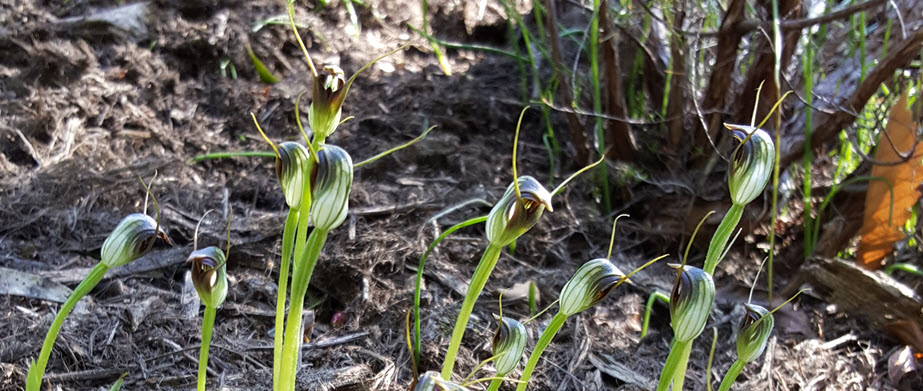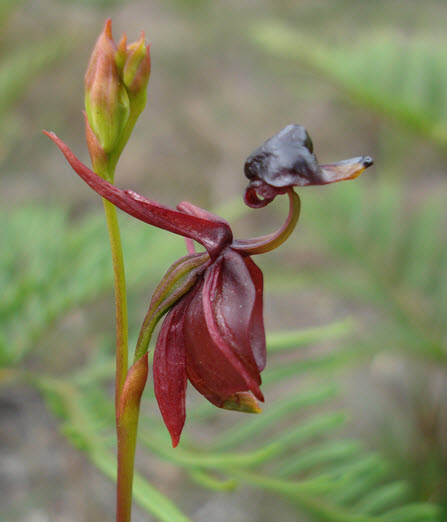CONSERVATION PROJECTS
Tasmania has a rich and diverse native orchid flora with over 200 species. Almost all of these are ground dwelling (terrestrial) with one species growing in trees (epiphyte) and another growing in crevices of rocky outcrops (lithophyte). Tasmania’s Midlands and Northwest are ‘hotspots’ for orchid diversity and distribution
Over one third of Tasmania’s orchids are threatened with extinction and many others are naturally rare, only known from a small number of populations in Tasmania. Threats to Tasmanian orchids include climate change, competition from invasive weeds, land clearing for agriculture and urbanisation as well as many others. There is an urgent need to undertake conservation research to learn more about why these species are rare and how best to preserve them.
Research conducted by Drs Nigel Swarts and Magali Wright at the RTBG, is aiming to improve the conservation status of Tasmania’s most threatened orchids through a range of projects involving collaborations with community groups, NRM regions and other funding bodies.
These projects include:
- Revising the Threatened Tasmanian Orchids Flora Recovery Plan 2006-2010. In collaboration with DPIPWE’s Threatened Species Section and orchid specialist Mark Wapstra, this project is reviewing the conservation status and threats faced by orchids listed on Tasmania’s Threatened Species Act. Included in this revision is the recommendation of a range of new strategies for both on site (in situ) threat mitigation and of site (ex situ) conservation research.
- Threatened Orchids Propagation Program. Funded through an MOU with DPIPWE, NRM South, NRM Cradle Coast, Friends of the RTBG and Threatened Plants Tasmania, this project aims to train volunteers in propagation methods for Tasmania’s orchids.
- Continental-scale Specialisation in Mycorrhiza of Orchids. This project, funded by the Australian Orchid Foundation and Herman Slade Foundation, in collaboration with CSIRO Plant Industries and the Botanic Gardens and Parks Authority (WA) will investigate the requirement orchids have for a soil fungus for survival. Known as ‘mycorrhiza’, orchids require these fungi for the provision of nutrients and water from germination right through to maturity. This three year continental scale project will explore mycorrhizal diversity across each terrestrial orchid genus and attempt to better understand how this diversity is influenced by habitat type and colonisation patterns within the orchid’s underground organs.


Dr Nigel Swarts at work in the TSCC laboratory.
Dr Nigel Swarts completed his PhD with the University of Western Australia and has worked as a research scientist at the Botanic Gardens and Parks Authority (WA). Nigel is currently hosted by the RTBG. If you would like more information on these projects or other orchid related research please contact Nigel.
Dr Magali Wright is the Biodiversity coordinator at NRM South.
Dr Magali Wright completed her PhD on using mycorrhizal fungi in orchid conservation with the University of Melbourne. She is the Biodiversity coordinator at NRM South, and has previously worked as an Orchid Conservation Officer at the Royal Botanic Gardens Melbourne and as a lecturer in plant science at Burnley Campus of the University of Melbourne.
Orchid conservation programs at the Royal Tasmanian Botanical Gardens. Video produced by NRM South http://www.nrmsouth.org.au/




